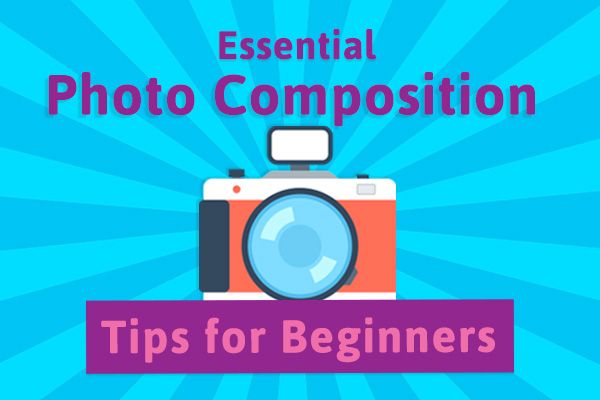This guest post is written by Marissa M, our Franchise Support and Design Assistant.

Photographers work with a wide range of subjects and scenes, and this requires a more open-minded approach. No two photographers will compose an image the same way, but there are some guidelines and photography tips that will help you as you develop your own personal style. It’s important to realize the decisions you make about composition can affect the end result of the image and how people perceive your photos. Photo composition, done well, will guide the viewer’s eye through the image with balance. Here are a few basics in photography and photo composition tips that you can use to create compelling photos.
Tips for Taking Better Photos
- Simplify the scene
One of the first steps for simplifying the scene is to choose a clear focal point for the viewer. The human eye and a camera lens act almost identical, though our brains can pick out subjects of interest. Unfortunately a camera does not have this ability; they capture everything in the frame which can lead to cluttered pictures that make for “information overload” for the viewer. A rule of thumb for taking better photos is to first choose your focal point. The next step is to select a focal length or viewpoint that will make it the center of attention in the photo.
A quick word of advice: always feel free to move your feet! Great photographers do not photograph from one place; they’re constantly moving around to capture the best angles of their subject.
- Avoid the Middle (aka. Rule of Thirds)
Rookie photographers always tend to photograph their subject right in the middle of their camera frame. However, these images can look static, and create dull images with no story being told. The Rule of Thirds is one of the most important photo composition tips to use while playing around with your viewpoint. Split up your image into 9 equal parts, with lines both horizontally and vertically, and try to place your subjects on one of the imaginary intersecting lines. This creates balance between your subject and everything else in the scene. In this way, it keeps the image interesting and dynamic.
- Leading Lines

A great way to control you viewer’s attention is to compose your photographs with leading lines. This technique refers to using lines and angles to direct your viewer’s eyes to the focal point of the image. A pointing arm or wooden panels of a fence can emphasize the subject if they lead their eye to the main subject; they should provide direction rather than distraction. Leading lines can also be implied; perhaps by the direction in which an off-centered subject is looking—the possibilities are endless!
- Fill the Frame

Filling the frame can sometimes be mistaken as crowding it. You want to avoid crowding it because your subject will looked crammed within the frame of the image. Filling the frame is simply distinguishing your subject from your background, and making the necessary crops whenever you can. For example, small details of a woman’s face might be of most importance to the photographer. In this case, try to crop out as much of the background as possible and zoom in on the lines and details to emphasize the woman’s important features! This technique is one of the basics in photography that can be tricky, but with enough practice, you’ll be taking better photos in no time!
- Symmetry

The rule of symmetry is a great excuse to break the rule of thirds. When composed right, a symmetrical photo can produce a powerful, moving image that resonates with the viewer. The rule of symmetry states that if you draw a line down the middle of your frame, the left side will be identical to the right side, almost like a mirror image. The reason symmetry works is it creates a feeling of balance and harmony in the photo. If you begin to look for symmetry in your photography, then eventually it will become second nature to you. You’ll begin to notice interesting scenes in your daily routine that could make incredible, eye-catching photos.
- Backgrounds
Not many people recognize that the background of a photo is just as important as your subject. If the background of a photo is too busy and cluttered, it can take away from the focal point of the image and confuse the viewer. It’s important to control the background in a way that compliments the focal point and allows the reader to clearly distinguish what the photographer meant for you to look at. If the background is part of the story you’re trying to convey, changing your position can make all the difference. Like I mentioned before, don’t be scared to move! A slight change in positioning yourself can make all the difference.

- Framing
Using natural objects to frame your subject is a great way to set the focal point apart from the image as a whole. Objects such as windows, doorways, or even the branches of a tree can create a visual boundary around your subject, drawing the viewer’s gaze right to where you want it to go. Having a set of foreground elements framing a focal point also helps avoid the viewer’s eye from drifting right off of the page, or aimlessly around the image.

By following these photography composition tips, which are the basics in photography, you’ll see a notable difference in the end result. Taking better pictures also involves a lot of practice, so keep playing with the camera and don’t be shy to try new things! If you’re an amateur event photographer, check out these event photography tips.
Good luck,
Marissa
Reference: DigitalPhotoSecrets


Comments